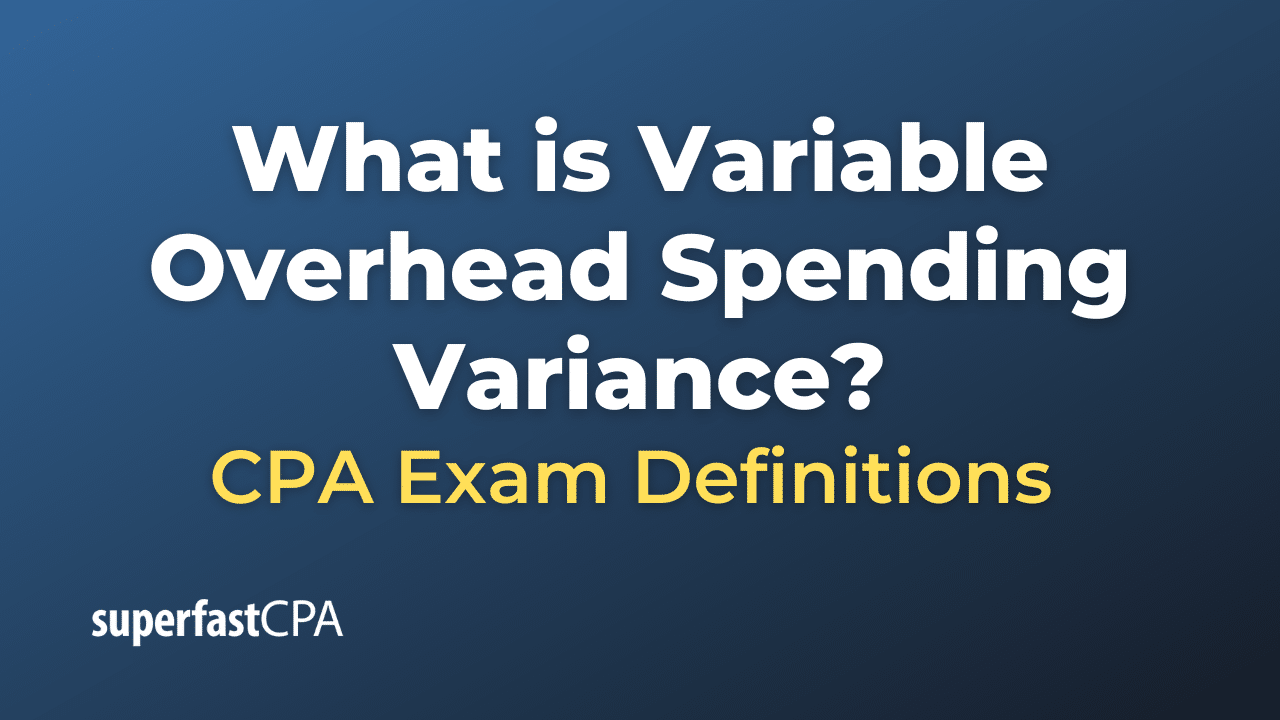
The other variance computes whether or not actual production was above or below the expected production level. As an example of an unfavorable fixed overhead spending variance, a passing tornado delivers a glancing blow to the production facility of Hodgson Industrial Design, resulting in several hundred roofing tiles being blown off. This cost is part of the facilities maintenance budget, which normally does not vary much from month to month, and so is part of the company’s fixed overhead.
Ask Any Financial Question
An overhead cost variance is the difference between how much overhead was applied to the production process and how much actual overhead costs were incurred during the period. Therefore, these variances reflect the difference between the standard cost of overheads allowed for the actual output achieved and the actual overhead cost incurred. Fixed overhead budget variance is favorable when actual fixed overhead incurred are less than the budgeted amount and it is unfavorable when the actual fixed overheads exceed the budgeted amount. Variable overhead spending variances can alter a company’s financial statements, particularly the income statement and balance sheet.

Impact on Financial Statements
All such information is provided solely for convenience purposes only and all users thereof should be guided accordingly. Finance Strategists has an advertising relationship with some of the companies included on this website. We may earn a commission when you click on a link or make a purchase through the links on our site.
Effectively Managing Variable Overhead Spending Variance
This formula takes the difference between the standard variable overhead rate and the actual variable overhead rate, and multiplies this by the actual quantity of units of variable overhead used. A positive variance is considered unfavorable, as it means that the actual variable overhead costs exceeded the expected costs. Conversely, a negative variance is favorable, indicating that the actual costs were less than expected. Specifically, fixed overhead variance is defined as the difference between standard cost and fixed overhead allowed for the actual output achieved and the actual fixed overhead cost incurred. The variance is calculated using the variable overhead efficiency variance formula.
Related AccountingTools Course
The standard overhead rate is the total budgeted overhead of $10,000 divided by the level of activity (direct labor hours) of 2,000 hours. Notice that fixed overhead remains constant at each of the production levels, but variable overhead changes based on unit output. If Connie’s Candy only produced at 90% capacity, for example, they should expect total overhead to be $9,600 and a standard overhead rate of $5.33 (rounded). If Connie’s Candy produced 2,200 units, they should expect total overhead to be $10,400 and a standard overhead rate of $4.73 (rounded). In addition to the total standard overhead rate, Connie’s Candy will want to know the variable overhead rates at each activity level.
- If Connie’s Candy only produced at 90% capacity, for example, they should expect total overhead to be $9,600 and a standard overhead rate of $5.33 (rounded).
- This involves identifying the factors contributing to discrepancies between budgeted and actual expenses.
- The fixed overhead spending variance is the difference between the actual fixed overhead expense incurred and the budgeted fixed overhead expense.
How to Interpret the Fixed Overhead Spending Variance
Another variable overhead variance to consider is the variable overhead efficiency variance. In this example, the Variable Overhead Spending Variance is $800, which is an unfavorable variance. This means that the company spent $800 more on variable overhead costs than expected, based on the standard rate and the actual hours worked.
The standard overhead rate is the total budgeted overhead of \(\$10,000\) divided by the level of activity (direct labor hours) of \(2,000\) hours. If Connie’s Candy only produced at \(90\%\) capacity, for example, they should expect total overhead to be \(\$9,600\) and a standard overhead rate of \(\$5.33\) (rounded). If Connie’s Candy produced \(2,200\) units, they should expect total overhead to be \(\$10,400\) and a standard overhead rate of \(\$4.73\) (rounded). The variable overhead variance is a measure of the difference between the standard variable overhead costs and the actual variable overhead costs incurred for a given period. Furthermore in a standard costing accounting system, variable overhead has two main variances, the variable overhead rate variance and the variable overhead efficiency variance.
This preparation of a budget is a process that involves the estimation of prices, demand, and expenses for the following year. Variable overhead is an indirect expense that increases as production increases and decreases as production decreases for example diesel oil used in a production plant. The variance is unfavorable because the actual spending was higher than the budget.
By contrast, efficiency variance measures efficiency in the use of the factory (e.g., machine hours employed in costing overheads to the products). The applied overhead value represents the variable indirect expenses that would have been incurred if 4,500 hours had been estimated instead of 5,000 hours. This is turbotax is open and accepting tax returns now the portion of volume variance that is due to the difference between the budgeted output efficiency and the actual efficiency achieved. In case of fixed overhead, the budgeted and flexible budget figures are exactly the same. The management would likely investigate this variance to identify the root cause.
When actual costs surpass budgeted amounts, the immediate impact is typically seen in reduced gross margins as operating expenses rise. This erosion of profitability can be concerning for stakeholders, as it may signal inefficiencies or mismanagement in cost control. Consequently, the income statement reflects a lower net income, which can influence investor perceptions and potentially affect stock prices.
